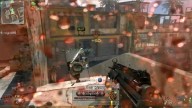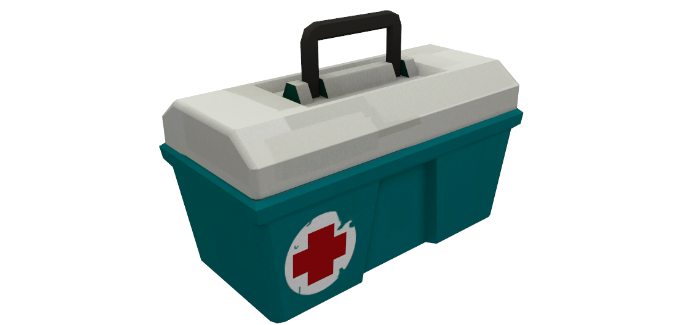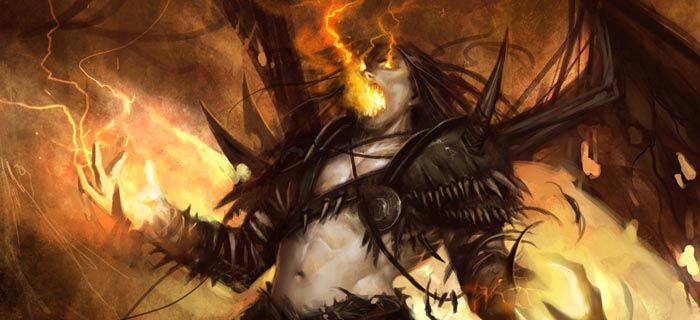Grahf Games guest article: Are health kits obsolete?
Remember Grahf of Grahf Games? We loved his last guest article so much, we asked him back for more. Today, Grahf dissects the ever-present struggle of game design: how the hell health is measured. Which system is better, HP kits or regenerating health?
I know a lot of games rely on health bars: from platformers that have long since moved away from the one hit one life equation, to fighting games where that’s really the entire bloody point of the thing. I’m going to focus on a particular genre’s usage of healthbars though: the first person shooter.
The HP tradition makes a transition
There’s been a lot of division recently over the two different schools of how healthbars work in FPS’s. In the beginning, you had a set amount of health. When you took a fireball or Nazi round to the face your health dropped. If you got into bad enough straits, it was time to find a health kit that could heal you anywhere from five health back to full depending on the size. These games also usually incorporated armor, which basically doubled your health… but needed to be found first. Still, fairly straightforward: run out of health and you died, end of story.
The more recent trend though, especially with so called cover shooters like Gears of War and the endless amounts of titles that have aped it, is to have health that regenerates. In cases like these you might not even know the number of your hit points; you still have indications like how beat up the character looks or perhaps how red your screen is, but there’s no distinct amount for you to glance at and say “Ah, I’m this far away from being a meaty pile of crap.”
Likewise, when you take damage you’re not going to be scrambling for a health kit, no sir; instead you just ride it out: wait until your dude looks better or your screen is a little (or a lot) less red, and then you continue on. Essentially, as long as you can find somewhere to catch your breath, you’ll be fine and can continue on after a short respite.
Let’s get real: the pros and cons
Now, before I continue let’s get one thing out of the way here, right off the cusp: neither of these methods are at all realistic, and nor will they ever be. Ever. There are some proponents of the fixed, non-regenerating health camp that like to foist this kind of bullshit argument at the regenerating health, saying “Oh man it’s so unrealistic!” well, guess what, so is being able to run, jump, shoot, punch, and do whatever else it is that your character does all without penalty at all even at one health out of one hundred. There’s no realism between being a fully functioning human being at one health and being a meat pile at zero, so get over it. Besides, in half these games you’re fighting shit like Nazi zombie aliens or whatever. If you want realism, that’s fine, but don’t get all haughty over it when it’s really not even close to the point that you’re actually mad about.
With that little annoyance out of the way, let’s carry on, shall we?
Both systems have their pros and their cons, otherwise there wouldn’t be any arguments over which is better — well, in a perfect world at least, but I digress. On the one hand, the fixed point, no regeneration system rewards smart, tactical gameplay and enforces a sense of danger, especially when you can’t carry a health kit with you and don’t know when or where the next one might be. Regenerating health is a bit more lenient and allows players to take bigger risks while still punishing them for stupid ones; it also means that you don’t have to worry about finding health as long as you don’t mind a slight interruption in the gameplay in order to top yourself off.

Eh, just walk it off.
The downside of fixed health is that sometimes if you take an unlucky hit (and don’t tell me it doesn’t happen because it does) you might suddenly find yourself in an unwinnable situation.
Not to mention that if you desperately need the health you might end up backtracking to the last place you actually saw a pack — something which can be more disrupting to the game flow than sitting and waiting to regenerate — and that ever present number can cause players to second guess themselves, always wondering if they have enough health to survive the encounter ahead or if they need to find a kit to get that little extra boost. It’s not a horrible downside, but it’s there.
With regenerating health though, sometimes it really can feel like you’re getting your hand held throughout the gameplay experience. Sitting and waiting — especially if it takes a long amount of time to go from gravely injured to full — is boring and something that games shouldn’t be encouraging if they want to tout themselves as fast paced action-oriented shooters. Likewise, sometimes in the heat of things cues as to your current condition might be missed, and without an absolute number to fall back on you can never be sure if the next hit is going to be the last one you can take. More realistic, actually, but at the same time somewhat disheartening when you thought that you were maybe moderately damaged only to keel over at the next bullet.
Why can’t we all get along?
So, is there a solution, something that incorporates the best of both worlds?
Well, sort of. Games like the first Halo, the original Resistance, and a handful of others use both regenerating and fixed health. Halo had regenerating health in the form of a shield, but you also had health that you’d need to medkit back up if you lost it. Resistance took a different approach with a segmented health bar: four segments could each regenerate if given a short rest, but once you lost an entire one then you had to pick up a health kit to restore it.
Neither is a perfect solution, but it’s a compromise that I believe ultimately benefited both games. It was indicative without leading to too many unwinnable scenarios, and helped keep the pacing right on track. There’s a fine line between making something arbitrarily difficult and making it laughably easy. The different iterations of health are getting closer, but we aren’t quite there yet. It will be interesting to see just what new tricks developers and designers come up with in the future when dealing with this subject.








Personally, I’m a fan of health packs, because regeneration makes stuff kinda easy. And it decreases productivity, but decreases death rates. Ex.
Oh lordy! I’ve been shot! Let me just sit behind this rock a minute, and not contribute to my team at all.
Or health packs.
ARGH DEM BASTARDS POPPED A CAP IN ME. E. E. E. E. E. E. E. MEEEDICC
Get me a health pack! Alright, I’m good.
On the other hand, you could also be sitting behind a rock waiting for health to spawn.
Good article Grahf, hope to see more.
I personally prefer fixed health, maybe with the addition of being able to regenerate from slight injuries (You caught ONE bullet, big deal, walk it off already!)
I do like Left 4 Dead (2)’s system, where you actually get reduced to a snail racing pile of meat standing while you are at 1 health.
Or perhaps a vampire system. Oh, you got me down to 1! Let me shoot this flak INTO YOUR FACE and be full again!
Dump on realism, that is fun.
I never played Resistance, but I like the sound of that system. I have never been a huge fan of either system, and I guess the real-life system of “you usually die in 1 shot, and if you do live you will quickly bleed out” simply wouldn’t be “fun” in most games.
agreed.
I disagree to your agreement. But I agree with WiNG’s agreement of resistance sounding awesome. Let’s all agree to disagree by agreeing to agree to disagree.
NO!
Armor/Health systems have always been my favorite systems, but considering that my first FPS was Dark Forces on DOS might have a reason to deal with it.
One of the bigger issues I tend to see though is that a game’s health system has been thought about for one mode, but not for everything. Halo’s system for example is great for single player, but multilayer seems like a crapshoot. Your fargame weapons to little to affect the tide of a battle unless it has a oneshot Ability. When regenerating health is on the line, it seems that these games devolve into shotguns only. (Gears has the same issue as well). On the other hand, the BF3 and Code shows that the only way to make shotguns irellevnt is by making bullets per second the more important stat. With everyone taking three shots or less to down, too much emphasis is played on longrange, making the shortrange a mess of blind fire. I feel that the old school style of shooters had a better balance of the two games. Short range played more like paintball matches, but not completely siding withwho shot first, while long range made headshots more important in resolving stalemates.
The Resistance series has actually covered the entire spectrum it seems. The first game had the hybrid model, and even though I haven’t played the other two it seems the second was completely regenerating health, and the third had no regenerating health at all.
Strangely, there might actually be some in game reasoning for this, since in the first game you don’t actually have the partial regeneration at the beginning, you get it for story related reasons. Still, them jumping all over the place with it is somewhat confusing, since I thought the method the first game used was really good.
I’m a fan of Farcry 2, and Max Payne’s answer. You carry the health packs, and use them when needed, here’s the thing in both games it’s best to get away from the action and hit H (forgot what you hit in Max) and boom your up to full health and ready to throw another rocket at them, or some buckshot instead of waiting to recharge. The cool thing about Farcry is the animation of using a knife to remove a bullet, or wrapping your arm with gauze.
IMO bring the health packs back, the current find cover and let your hp regen just says to me that it is ok to screw up.
I think it’s a little fallacious to presume that the industry needs to move in one direction or another, both systems can fit within a well-thought-out game. Quake and TF2 would be totally undermined by regeneration since they’re so focused on attrition and map control, but that doesn’t mean CoD would be improved by healthpacks.
TF2 is actually an interesting example as while there are health pickups, there are also a number of regeneration methods, albiet only one is player specific and always consistent. The medic gets his bonus simply due to the fact he’s unarguable the most important class and needs the survivability, and the lack of one major source of healing (that being his own medigun) means he’s at a huge survivability disadvantage compared to his allies. Despenser’s are sort of like controlled regeneration. As is the Black Box, the Concheror, and the mad milk (did I forget anything?). The argument is generally between efficient yet predictable (for both sides) sources of health verses personal (yet calculatable) source of healing. Both provide an interesting balance attempt and an interesting way to balance classes and weapons (the scout, spy and medic rely more on health pickups due to their specific abilities while the powerclasses rely more on engis and medics. Snipers usually go either way depending.) All in all, I agree with you and I don’t know why I’m writing this. I go to Top Tier Tactics when it’s late at night to just ramble.
Challenge Accepted. The powerjack, the candy cane (ish), Half-Zatoichi, Fishcake, Sandvich, Dalokohs Bar, Blutsauger, and Conniver’s Kunai. The sniper remains as the only class that cannot heal himself.
You forgot the steak sandvich. Throwing a sandvich at a wall is instant health healed, so yeah. Also, wow, you listed some of my favorite weapons, I am such an idiot.
Forgot you could right click and toss it. Fail.
AND THE EYELANDER.
It heals for 15 health on kill. :P
Except for shooting up a mad milked class with a headshot. Bring the fag-o-style set and some buddies that serve no purpose other than throwing that little non-milk substance bottle at enemy snipers and you’ll be dominating 2fort in no time.
It is surprising that those classes that have the strongest self heal actually profit the least of it.
Especially with the mad milk.
The base of the Scout is to fly around the map and dish out some damage from unexpected angles. It surely will turn some straight battles for you, but normally, you would try to stay undetected and thus not bring nearly enough damage for it to be that useful.
The Blutsauger is a nice weapon, but admit it, if you’re forced to use it, you’re screwed anyway. Also, it almost completely takes out any regeneration you would have otherwise, which is pretty ironic. You really should avoid any enemy contact, but this weapon will save you in one of a hundred cases. Given it doesn’t kill you before because you don’t out-regen fire.
The Kunai is nice too, but you have to consider that all it does is grant you 55 additional health at best in comparison to a regular knife. Sure, the self heal is terribly strong, but getting there is an arse pain.
getting into a situation where having 65 more base health would NOT save you, yet not instantly poof-ing from being looked at, is tricky. Getting out of it is even harder.
Especially when the entire enemy team is hurtme 199 donators that will equalize your face structures and heal you for 1!, should you catch them with their still overpowered weapon.
Crocostyle set is purely for trolling enemy Snipers. That’s it.
And are there still servers like nightteam that give premium accounts with benefits?
Disappointing.
I need the hat. Anyone want to donate?
:(
More like it, if you have even 1 point overheal, you’re immortal.
Given you’re the shot to heal up inbetween…
You might just pack a pocket medic, I guess.
I’m actually interested to see what other systems will eventually be developed. At the moment though most of the competition seems to be between the two I’ve mentioned, so that’s what I focused on.
I know that games like Insurgency even favour the one-shot one-kill model, with firefights being quick and brutal and “damage” registering as a jittery screen as you panic at the near miss of bullets.
I really enjoyed the hybrid system of Resistance, thought it was a nice touch that also supported the story as well. So I have a lot of faith in what people can develop if given enough time.
hey, i think valve is the only one that use health pack in their game (Except Portal)